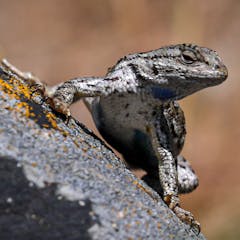
Articles on Evolution
Displaying 21 - 40 of 989 articles

The evolution of sexual behaviour is a long and complicated tale. Taking a long view involves a degree of speculation.

Did the enormous West Antarctic Ice Sheet collapse the last time global temperatures were 1.5°C above preindustrial levels? The answer lay in the DNA of an octopus.

Our mammal ancestors evolved to compete with dinosaurs but may have lost something in the process.

A newly described fossil from South Australia is making waves in our understanding of where and when whales evolved titanic body sizes.

The human brain uses up 20% of the energy we consume.

Inflammation could be the missing puzzle piece.

Two dental experts explain that these furthest-back molars may be a not-so-necessary leftover from early human evolution.

For decades, scientists have tried to uncover the cause of long-term changes in Earth’s biodiversity. New simulations point at geography playing a critical role.

From dark dragonflies becoming paler to plants flowering earlier, some species are slowly evolving with the climate. Evolutionary biologists explain why few will evolve fast enough.

Rapidly changing temperatures and sensory environments are challenging the nervous systems of many species. Animals will be forced to evolve to survive.

‘Assembly theory’ aims to explain evolution without biology. Is it a dazzling breakthrough or an attempt to answer questions nobody asked?

Researchers discovered a satellite virus latching onto the neck of another virus called MindFlayer. Studying the viral arms race between similar viruses could lead to new ways to fight infections.

From math to evolutionary game theory, looking at cancer through different lenses can offer further insights on how to approach treatment resistance, metastasis and health disparities.

Life seems to just mysteriously ‘emerge’ from non-living parts, such as elementary particles.

Life on Our Planet has some important messages about the nature of evolution, and what the future may hold for us.

New research looks at how different species have managed to cross geographic barriers throughout history and whether their individual traits played a crucial role in these journeys.

Groundbreaking study demonstrates how behaviour drives long-term evolution over 20 million years.

Charles Darwin knew the evidence from fossils contradicted evolution. Researchers are still trying to work out the problem today.

A new cross-species study shows same-sex sexual behaviour has social benefits for groups, which explains its high frequency in humans and other mammals.

The answers lie in early human evolution.





